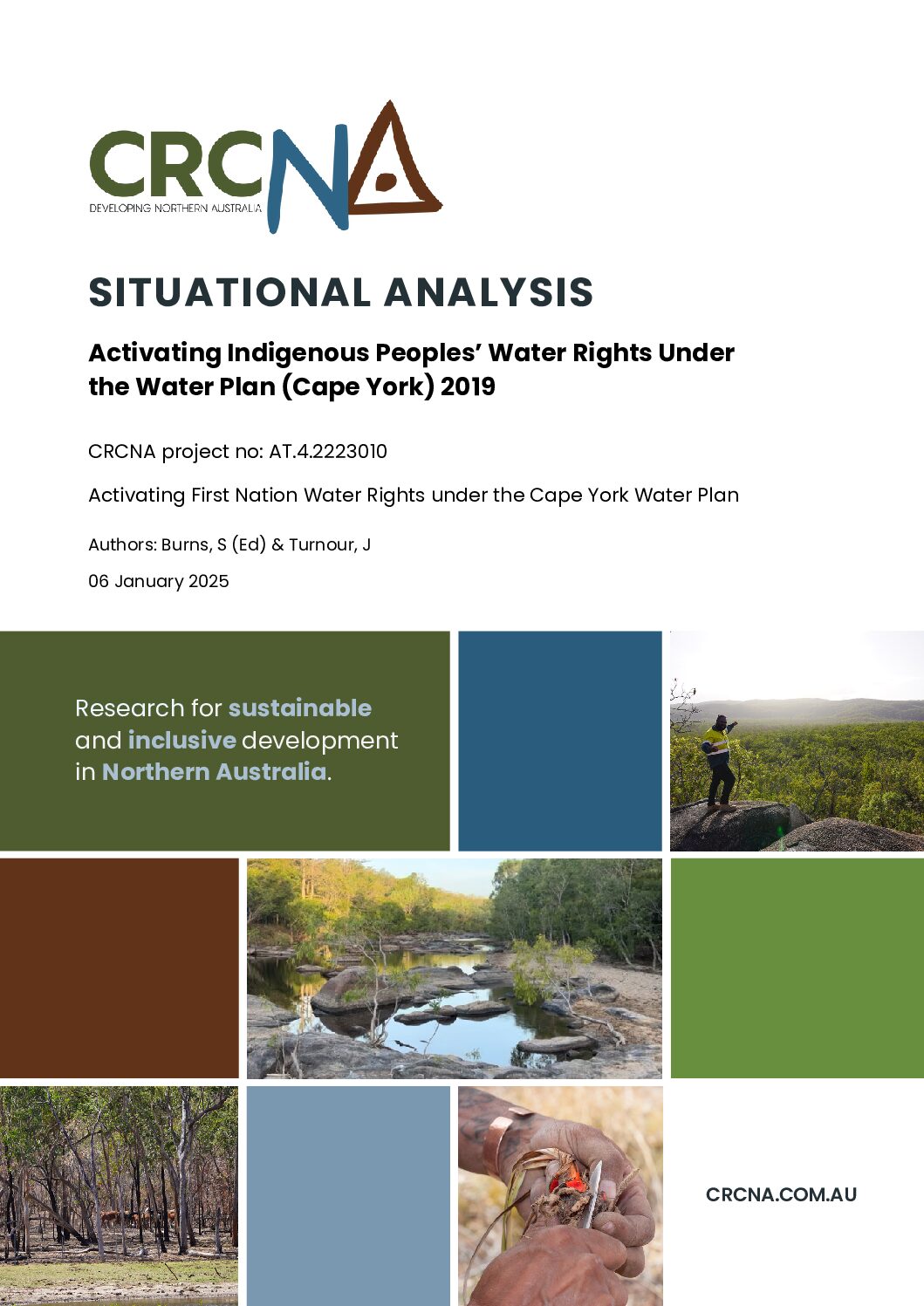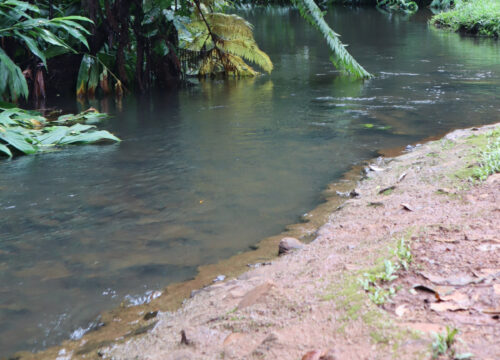
- Author CRCNA and Qld, NT and WA Governments
- Publish date 6 January 2025
- Type Report
- ISBN 978-1-922437-56-3
- Documents
- Water
- First Nations led business development
Summary
This Situation Analysis Report details the current situation facing Cape York Aboriginal people seeking to understand and activate their water rights provided through Queensland’s statutory water planning process. The Water Plan (Cape York) 2019 and its Cape York Peninsula Heritage Act (CYPHA) reserve make 485,300ML of water available across 15 Cape York river catchments for Aboriginal corporations that perform Registered Native Title Body Corporate and/or Trustee of Aboriginal Freehold land functions. Under the Water Plan, where native title and Aboriginal freehold land rights and interests coincide in the same area of land, corporations that are the Trustee of Aboriginal Freehold land have priority for a water licence over Registered Native Title Bodies Corporate for the coincident area.
A water licence nominating a volume of water and its conditions of use will be granted to eligible Aboriginal corporations upon application, where the water licence volume is calculated according to the volume of water available in the catchment and the percentage of the catchment area where the corporation holds an interest in land. An eligible Aboriginal corporation applying for and being granted a water licence is the first step in the process to activate the CYPHA water reserve. However, before water may be taken and used, the licence holder must apply to the Department of Regional Development, Manufacturing and Water (DRDMW) Chief Executive to amend their water licence. If approved by the Chief Executive, the licence will be amended to include a schedule of conditions regarding the taking and using of water. These conditions ensure issues such as environmental impacts and native title are considered prior to water being extracted from a watercourse and used for a land-based project. The licence holder may also apply to assign water to a third party, and if approved, this would enable water to be leased for a set period of time but not permanently traded.
A desk top analysis to consider opportunities to activate CYPHA water for agriculture, aquaculture, energy production, mining, ecosystem services or municipal supply was undertaken, but few opportunities were identified. Cape York has relatively small areas of fertile soils, limited infrastructure and skilled labour and is remote from markets. Of the water use opportunities reviewed, mining and ecosystem services appear to be most prospective, although an ecosystems services market will need to be created before this opportunity could be meaningfully realised.
Projects
Activating First Nation Water Rights under the Cape York Water Plan
The Cape York Water Plan 2019 sets aside 485,300 ML of water for Traditional Owners in Cape York under the Cape York Peninsula Heritage Act Reserve (Table 1).There is a lack of understanding, however, amongst Traditional Owners and their Corporations about their water rights and related opportunities with only two Aboriginal Corporations having applied for and been granted allocations. This project will build an understanding amongst Traditional Owners and their Corporations of their water rights and support them to access and utilise these rights. This project will also address the challenges other stakeholders have seeking to access and utilise these CYPHA allocations by providing information on the Aboriginal Corporations who hold these allocations and the process for engagement and leasing of water rights. The project will also inform broader reforms across Northern Australia in relation to strategic Indigenous reserves and inform other water policies and processes such as the refresh of the National Water Initiative.


